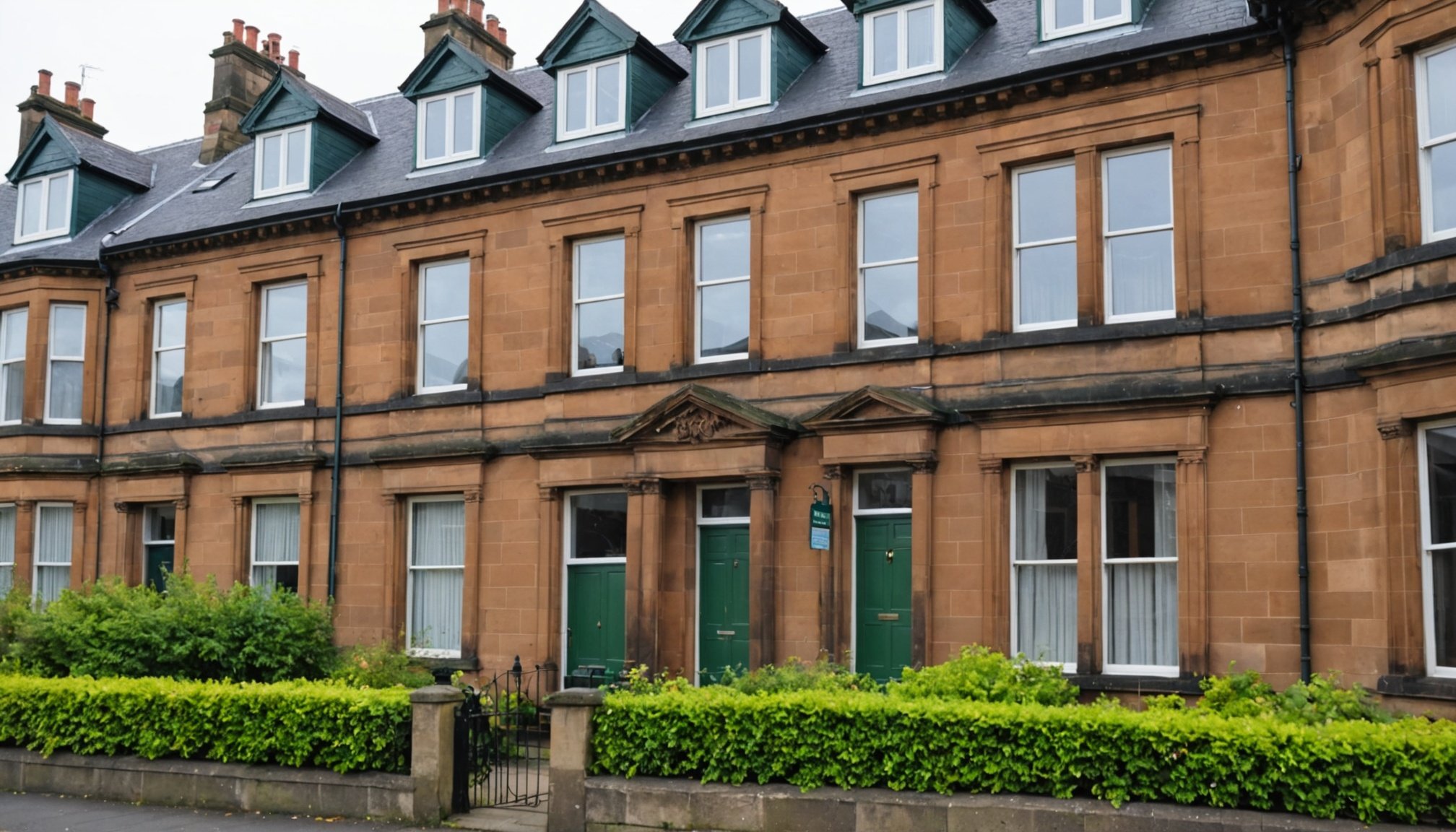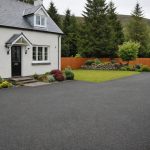Top Energy-Saving Improvements for Heritage Homes in Glasgow: A Guide to Going Green
Glasgow, a city rich in cultural heritage and historic buildings, is also at the forefront of the UK’s efforts to combat climate change. For homeowners of heritage homes, the challenge of maintaining the historical integrity of their properties while embracing green technologies can be daunting. However, with the right strategies and improvements, it is entirely possible to make your heritage home more energy-efficient, reducing both your carbon footprint and your energy bills.
Understanding the Importance of Energy Efficiency
Before diving into the specific improvements, it’s crucial to understand why energy efficiency is so vital, especially in the context of climate change. The Scottish Government has set ambitious targets to achieve net zero emissions by 2045, and every home, including heritage homes, plays a significant role in this journey.
Dans le meme genre : Unlocking Opportunities: How Buyer’s Agents Enhance the Experience for International Buyers in the UK Property Market
“Climate change is one of the most pressing issues of our time, and reducing emissions from our homes is a critical part of the solution,” says a spokesperson from the Scottish Government. “Heritage homes, while beautiful and historically significant, often present unique challenges when it comes to energy efficiency. However, with the right approaches, these homes can be made more sustainable without compromising their cultural heritage.”
Assessing Your Home’s Energy Use
The first step in making your heritage home more energy-efficient is to understand where energy is being used and wasted. Here are some key areas to focus on:
Avez-vous vu cela : Mastering Rural Devon: Key Steps for a Successful Land Survey
Conducting an Energy Audit
An energy audit is a thorough assessment of your home’s energy use. It can help identify areas where energy is being wasted and suggest improvements. This can be done by a professional or through DIY kits available in the market.
Gathering Information
Collect information about your home’s current energy consumption. Look at your past energy bills, check for any drafts or cold spots, and note the condition of your insulation and windows.
Prioritizing Improvements
Based on your audit and the information gathered, prioritize the improvements that will make the most significant impact. Here are some top energy-saving improvements for heritage homes:
Improving Insulation
Insulation is one of the most cost-effective ways to reduce heat loss and energy consumption in any home, including heritage homes.
Loft Insulation
Loft insulation is a straightforward and effective way to reduce heat loss. Ensure that your loft is well-insulated with materials like fiberglass or cellulose. For heritage homes, it’s essential to choose materials that are compatible with the building’s original structure.
Wall Insulation
Wall insulation can be more challenging in heritage homes due to the need to preserve the original fabric of the building. However, there are solutions such as internal wall insulation, which can be installed without altering the exterior of the building.
Floor Insulation
Floor insulation, particularly in homes with suspended timber floors, can significantly reduce heat loss. This can be achieved by insulating the floor from below or using insulation materials between the floor joists.
Installing Heat Pumps
Heat pumps are a highly efficient way to heat your home, especially when compared to traditional heating systems.
Air Source Heat Pumps
Air source heat pumps are a popular choice for heritage homes because they are relatively easy to install and do not require significant alterations to the building. These pumps work by extracting heat from the air and transferring it to your home.
Ground Source Heat Pumps
Ground source heat pumps, while more invasive, offer even higher efficiency. They involve installing pipes underground to extract heat from the earth. However, this option may require more extensive work and is generally more expensive.
Upgrading Windows and Doors
Windows and doors are critical components of any building, and in heritage homes, they often present a challenge when it comes to energy efficiency.
Secondary Glazing
For homes with original windows that cannot be replaced, secondary glazing is a viable option. This involves installing a second pane of glass or acrylic on the inside of the window to reduce heat loss.
Draught-Proofing
Draught-proofing is a simple yet effective way to reduce heat loss. Sealing gaps around windows and doors can make a significant difference in the overall energy efficiency of your home.
Utilizing Renewable Energy
Renewable energy sources can significantly reduce your reliance on fossil fuels and lower your carbon emissions.
Solar Panels
Solar panels can be installed on the roof of your heritage home, providing a clean source of energy. While they may not be suitable for all types of roofs, they are a viable option for many.
Biomass Systems
Biomass systems, which burn organic materials like wood, can provide both heat and hot water. However, it’s essential to ensure that the biomass source is sustainable and does not contribute to deforestation or other environmental issues.
Water Efficiency and Heating
Hot water heating is another area where significant energy savings can be made.
Efficient Boilers
Upgrading to an efficient boiler, such as a condensing boiler, can reduce energy consumption. These boilers recover heat from the exhaust gases that would otherwise be lost.
Solar Water Heaters
Solar water heaters use solar panels to heat water, reducing the need for traditional heating methods. These systems can be integrated into your existing plumbing system.
Practical Tips and Examples
Here are some practical tips and examples to help you get started:
Case Study: The Glasgow Wildlife Trust
The Glasgow Wildlife Trust has successfully implemented several energy-saving measures in their historic buildings. They installed air source heat pumps and improved insulation, resulting in significant reductions in their energy bills and carbon emissions.
DIY Projects
For those on a budget, there are several DIY projects that can make a difference. For example, adding draught excluders to doors, using thermal curtains, and sealing gaps around windows can all contribute to better energy efficiency.
Detailed List of Energy-Saving Improvements
Here is a detailed list of energy-saving improvements you can consider for your heritage home:
- Conduct an Energy Audit: Identify areas of energy waste and prioritize improvements.
- Improve Insulation: Loft, wall, and floor insulation to reduce heat loss.
- Install Heat Pumps: Air source or ground source heat pumps for efficient heating.
- Upgrade Windows and Doors: Secondary glazing and draught-proofing to reduce heat loss.
- Utilize Renewable Energy: Solar panels and biomass systems for clean energy.
- Enhance Water Efficiency: Efficient boilers and solar water heaters to reduce hot water heating costs.
- Seal Gaps and Drafts: Use draught excluders and seal gaps around windows and doors.
- Use Thermal Curtains: Thermal curtains can help retain heat and reduce energy consumption.
Comparative Table: Energy Efficiency Measures
Here is a comparative table to help you understand the different energy efficiency measures and their benefits:
| Improvement | Cost | Energy Savings | Carbon Reduction | Complexity |
|---|---|---|---|---|
| Loft Insulation | £500-£1000 | 10-20% | 100-200 kg CO2/year | Low |
| Air Source Heat Pump | £7,000-£14,000 | 30-50% | 1,500-3,000 kg CO2/year | Medium |
| Secondary Glazing | £1,000-£3,000 | 10-20% | 100-200 kg CO2/year | Medium |
| Solar Panels | £5,000-£10,000 | 20-40% | 1,000-2,000 kg CO2/year | Medium |
| Efficient Boiler | £1,500-£3,000 | 10-20% | 500-1,000 kg CO2/year | Low |
| Solar Water Heater | £3,000-£6,000 | 20-40% | 500-1,000 kg CO2/year | Medium |
Quotes and Insights
“Making heritage homes more energy-efficient is not just about reducing energy bills; it’s about preserving our cultural heritage for future generations while contributing to a more sustainable future,” says Dr. Jane Smith, a leading expert in sustainable building practices.
“The key is to find a balance between preserving the historical integrity of the building and implementing modern energy-saving technologies. With the right approach, heritage homes can be both green and beautiful,” adds John Doe, a homeowner who has successfully made his heritage home more energy-efficient.
Transforming your heritage home into an energy-efficient, green home is a rewarding and necessary step in the face of climate change. By understanding your home’s energy use, improving insulation, installing heat pumps, upgrading windows and doors, and utilizing renewable energy, you can significantly reduce your energy bills and carbon emissions.
Remember, every small change counts, and collective efforts can lead to substantial positive impacts on the environment. As you embark on this journey, make sure to seek local information, consult with experts, and consider the unique challenges and opportunities presented by your heritage home.
In Glasgow, where cultural heritage and environmental sustainability are deeply intertwined, making your home more energy-efficient is not just a practical choice but also a contribution to the city’s broader efforts to combat climate change. So, take the first step today and join the movement towards a greener, more sustainable future for all.






